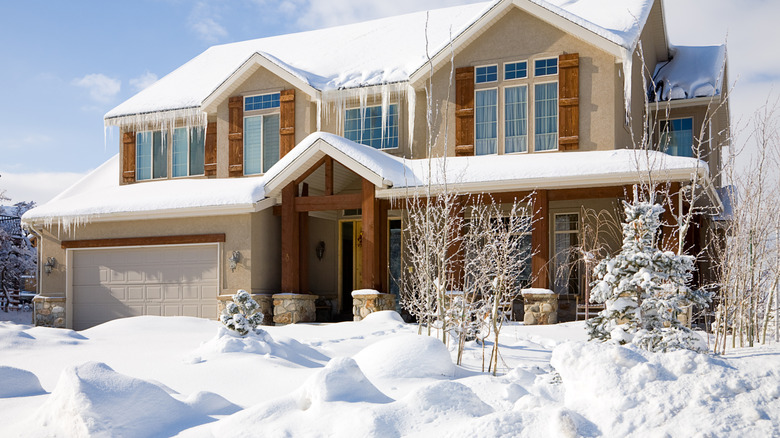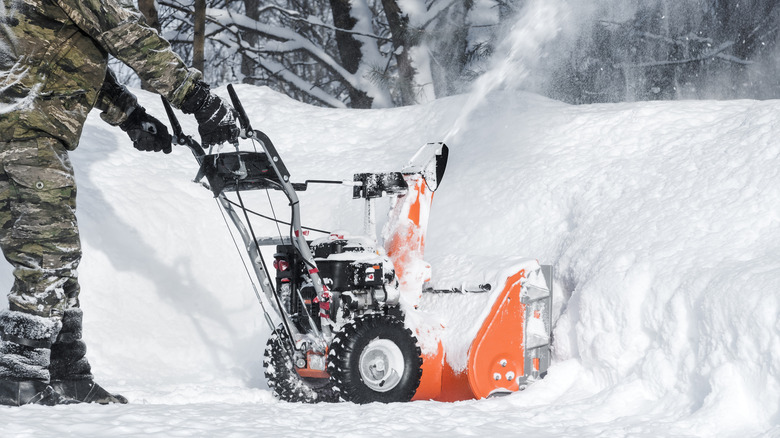The Benefits And Downsides To Snow On Your Lawn (& What To Look Out For)
Fluffy, swirling snowflakes look beautiful as they create a snowglobe-like feeling around your home, but is all that snow good for your lawn? The answer depends on the variety of grass and the amount of snow on top of it. Grass goes dormant when the soil drops to certain temperatures, depending on what type of grass you have — 55 degrees Fahrenheit for warm-season grasses and 45 degrees for cool-season varieties. The dormant state helps grass survive the winter by conserving nutrients like moisture. Snow on your grass can help during dormancy in some ways.
Snow sitting on the lawn melts gradually, which supplies a source of water for the grass. Think of it as a cozy, protective blanket of moisture for your yard. In addition to the moisture from melting, the snow also blocks the cold and drying wind, which often causes winter injury on a lawn. The cold wind can suck moisture out of the grass blades, cause it to freeze, and break the blades. The snow helps the grass utilize its stored reserves without drying out or getting damaged by the wind.
Mother Nature also helps you fertilize your grass with snow. Nitrogen occurs naturally in the environment. Some of that nitrogen hitches a ride on the snow and ends up on your lawn, where the layer of snow holds it onto the grass. This allows it to reach the soil, where it feeds your grass as the snow melts.
The drawbacks of snow on your lawn
If you live in a snowy area, you need to shovel your sidewalks and driveway regularly, and that snow usually ends up on the lawn. Large snow piles take longer to melt and can interfere with the air circulation around the grass. Using snow plows to clear snow can result in ruts or grass damage if the driver isn't careful. Watch for large piles, and spread the shoveled snow across the lawn when possible. Even snowmen can cause issues on your lawn with added weight that can break or kill the grass.
If you use ice melt products, the salt could end up on your grass. Rock salt, a common, inexpensive option, can be especially damaging to grass and other plants. The salt absorbs moisture from the grass, damaging or killing it. Ice melt products that use calcium chloride or magnesium chloride are safer for your grass. However, they could still cause damage. Apply the product according to the directions and use only as much as needed.
Snow mold is another danger for snow-covered lawns. What is snow mold? It's a fungus that usually grows on cool-season grasses when it's covered with deep snow, particularly when the ground isn't frozen. You likely won't notice until the snow melts in the spring and you see crusty, matted-down circular patches left behind. Clearing leaves and other yard waste before it snows and limiting how much snow piles on your grass can help prevent snow mold.

